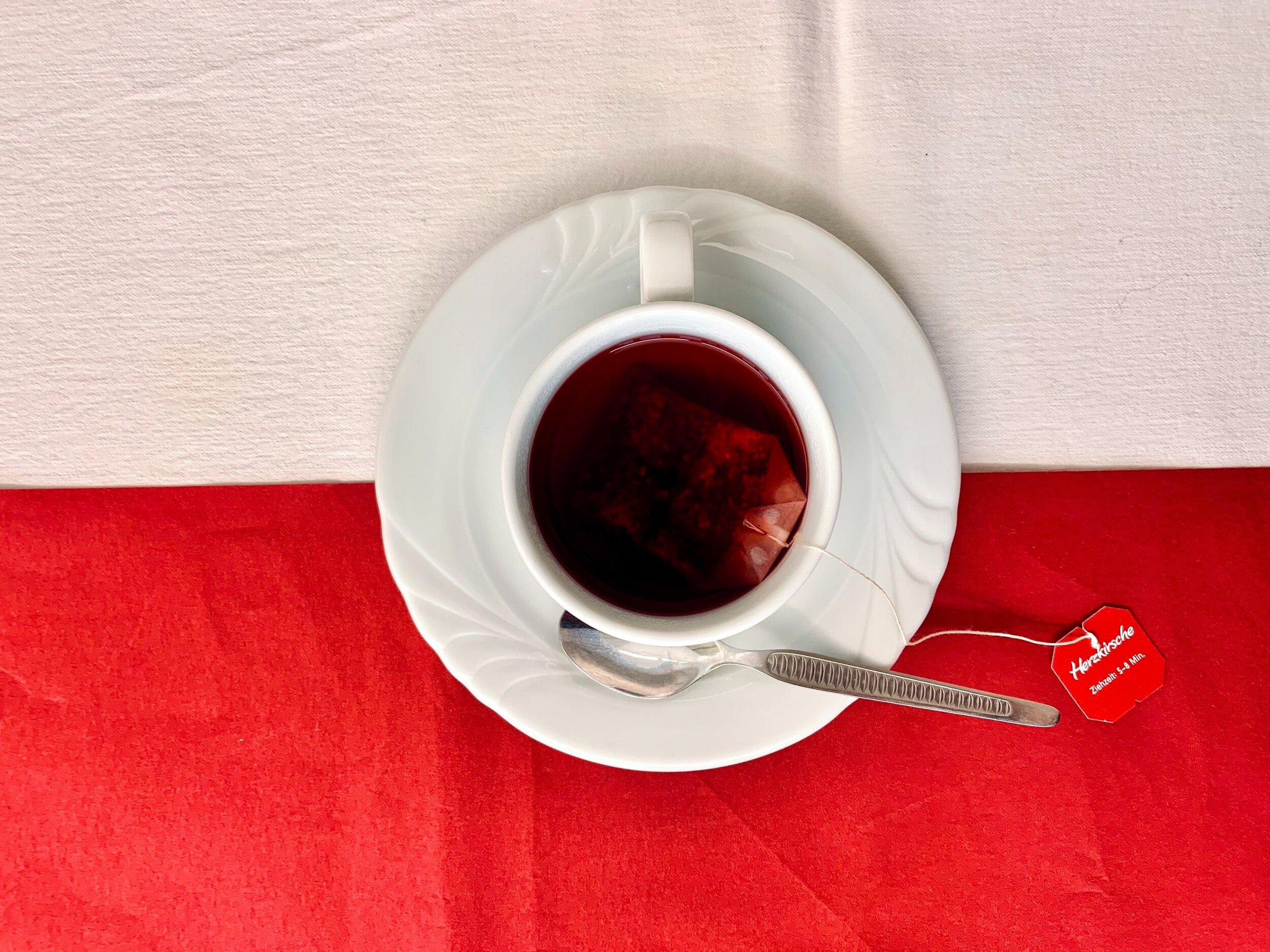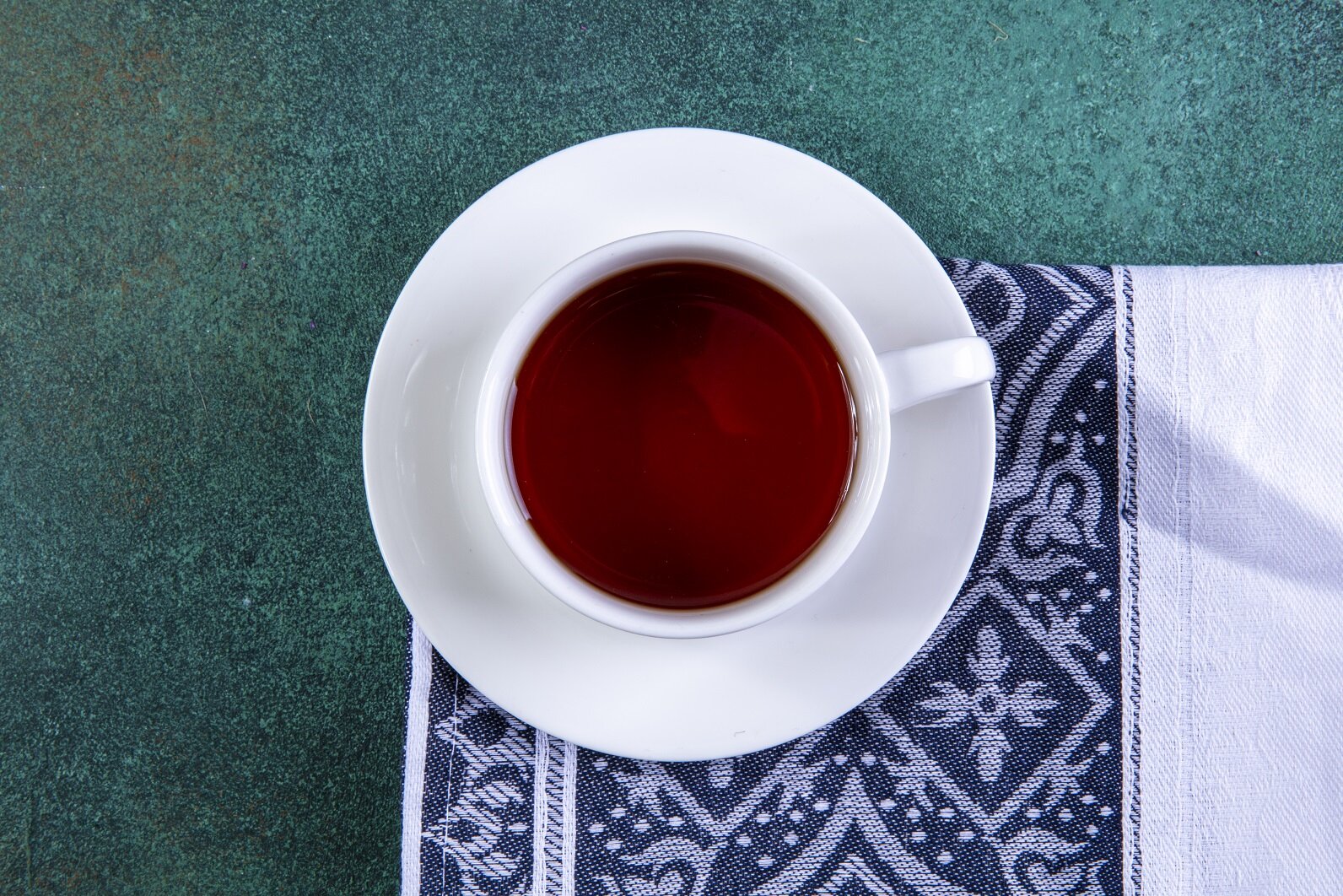Famous types of black tea and blends
This post contains affiliate links, which means Steeped Dreams earns a small commission if you purchase with these links or discount codes (at no cost to you). Please know all opinions in reviews on Steeped Dreams are genuine and not influenced by affiliate partnerships.
The name “black tea” gets thrown around a lot as a catch-all term. Even the popular tea brand, Lipton, labels their black tea as just that with no word about what kind of black tea it is or where it’s sourced (and trust me I really dug around). Most likely, when you have a generic “black tea” like Lipton, it’s a mix of tea leaves from various regions, countries, and seasons to ensure consistency in every batch [1].
And while black tea is all grown and produced in a similar way, there are too many black tea varieties to simply leave it at that. When you consider that black tea accounts for 75 percent of all tea consumed worldwide, you’ve really got to put your tea down and wonder how it all breaks down [2].
Some of the most famous types of black tea worldwide are single-origin, while others are blends. You’ve likely tasted many of these types already!
Types of single-origin black teas
Teas with single origins refer to teas that are sourced from a specific region of a country [3]. This is where several black tea names originate, as well. Climate, soil, and elevations can all affect taste, which give different single-origin teas their unique spin.
1. Assam
🥇 BEST BLACK TEA FOR MILK TEAThe state of Assam is vital to India’s tea industry, contributing about half of India’s total tea production and is considered the largest tea producing region in the world [4]! Assam tea is known for its rich red color, maltiness, light astringency (meaning it could be a bit bitter, and full-bodied flavor [1]. Its higher caffeine content and boldness makes Assam tea a perfect choice for several breakfast teas.
I first had Assam milk tea at a boba shop in Phoenix, and from then on decided it was the best tea for milk tea.
Try an Assam tea sample for $3 from The Tea Spot!
2. Darjeeling
Darjeeling is a small but mighty tea producing region in India, home to super-premium black tea. Its annual production volume comes in at 1/40th of that produced in Assam [5]. Darjeeling tea has its own special aroma and is best enjoyed without the addition of milk or sugar, according to Tea Board India [6].
Ceylon black tea originates in what is now called Sri Lanka (formerly Ceylon). This island is off the southeastern coast of India and boasts diverse elevations and climates that lend to Ceylon black tea’s various types. Certified Ceylon tea adheres to strict standards, such as being grown and packaged in Sri Lanka and low pesticide use [7]. Ceylon is typically used in other popular black tea blends like English Breakfast and Earl Grey.
Keemun is one of China’s best known black teas. It has a red color, floral character, and light, toasty flavor. Like Darjeeling, Keemun tea is best enjoyed on its own without milk or creamer. This type of black tea originates from Qimen (from which the name Keemun comes from) in China, where production only began in 1875 [8]. Keemun is also a favorite in many breakfast blends!
Try a Keemun tea sample for $4 from Adagio!
5. Golden Monkey
This Chinese black tea gets its name from the way the tea leaves resemble monkey paws. Unlike many ancient Chinese teas, Golden Monkey was only recently developed specifically for export in the last few decades and comes from Fujian, one of China’s most well-known tea producing regions [9]. It has a lightly sweet, apricot smell and chocolatey taste.
Best selling black tea blends
In contrast to single-origin teas, blends combine teas from multiple regions and countries, resulting in new flavors [10]. Blends also include flavored teas that include non-tea ingredients (like a passion fruit black tea!).
For these best selling black teas, I looked at the Best Sellers list of several leading tea companies to see what buyers loved most. Here are the top favorites from Harney & Sons, Adagio, Republic of Tea, DAVIDsTEA and Ahmad.
I strongly suggest these teas for beginners as well!
6. Earl Grey
🥇 BEST TASTING BLACK TEAEarl Grey tea easily wins the distinct honor of “Best Tasting Black Tea” with its floral undertones and balanced black tea blend. Its blend consists of three different types of Indian black tea: Assam, Darjeeling, and Ceylon [11]. Delicious bergamot oil tops it off for Earl Grey’s signature citrusy and flowery taste.
Known popularly as just chai to the rest of the world, this latte favorite is known as masala chai in its country of origin, India [12]. Masala refers to a blend of popular Indian spices used in everyday cuisine, not just tea. Chai uses a variety of black teas from the Darjeeling, Assam, and Nilgiri regions, each giving a unique benefit and flavor [13]. For example, Darjeeling pairs well with cardamom and Assam works wonders for hot chais.
Try The Adagio Tea’s delicious Masala Chai!
8. English Breakfast
English Breakfast tea is made of teas from India, Sri Lanka, and Keyna [11]. The exact proportions of each type depend on the tea company and their signature blend. In general, breakfast teas are made to be robust enough to easily add in milk or cream without watering it down.
Irish Breakfast, another breakfast blend, has more of a focus on Assam, giving it a stronger, more robust finish. In my opinion, Irish Breakfast is one of the strongest black teas that’s also easy to find.
✨ Read next: Quintessential British tea brands
-
[1] Gold, Cynthia, and Stern Lisë. Culinary Tea: More than 150 Recipes Steeped in Tradition from around the World. Running Press, 2010.
[2] Encyclopedia of Food and Health, edited by Luiz Trugo, Elsevier Science & Technology, 2015.
[3] “Single Origin Teas.” RateTea, 28 Aug. 2018, ratetea.com/topic/single-origin-teas/29/.
[4] “Government of Assam Industries & Commerce.” About Tea Industries | Industries & Commerce | Government Of Assam, India, industries.assam.gov.in/portlet-innerpage/about-tea-industries.
[5] Heiss, Mary Lou, and Heiss, Robert J.. The Story of Tea: A Cultural History and Drinking Guide. United States, Ten Speed Press, 2007.
[6] “Darjeeling.” The Official Website of Tea Board India, teaboard.gov.in/TEABOARDCSM/NQ==.
[7] “Guidelines for the Use of Lion Logo.” Sri Lanka Tea Board, 23 Sept. 1999, www.srilankateaboard.lk/images/sltb_downloads_new/Guidelines%20For%20the%20Use%20of%20Lion%20Logo.pdf.
[8] Freeman, Michael, and d'Offay, Timothy. The Life of Tea: A Journey to the World's Finest Teas. United Kingdom, Octopus, 2018.
[9] Harney, Michael. The Harney & Sons Guide to Tea. United States, Penguin Press, 2008.
[10] “Tea Blends.” RateTea, ratetea.com/region/blend/26/.
[11] Gaylard, Linda. The Tea Book: Experience the World’s Finest Teas, Qualities, Infusions, Rituals, Recipes. United Kingdom, DK Publishing, 2015.
[12] Perry, Sara. The New Tea Book: A Guide to Black, Green, Herbal and Chai Teas. United Kingdom, Chronicle Books, 2001.
[13] Rosen, Diana. Chai: The Spice Tea of India. United States, Storey Publishing, LLC, 2015.









![[Review] Firebelly Tea - Sleekly designed functional blends](https://images.squarespace-cdn.com/content/v1/6008e4b84dfdb80938cd0442/cdd4b217-3704-40dd-b11e-bc18ff413610/firebelly+tea+review.JPG)
![[Review] Harney & Sons - Paris tea and two similar blends](https://images.squarespace-cdn.com/content/v1/6008e4b84dfdb80938cd0442/5cf20e59-ce49-4fba-b9dc-16f1f43a1349/harney+tea+with+plant.JPG)


